Why You Should Use Kloudbean for PostgreSQL Database:
Kloudbean provides a seamless way to launch and manage a PostgreSQL database, offering an intuitive interface and minimal setup time. The databases are finely tuned to deliver exceptional performance, ensuring smooth and efficient operations. Security is top-tier, with granular access controls and robust encryption. Automated backups give you peace of mind, ensuring your data is protected and can be quickly restored if needed. Kloudbean's real-time replication feature empowers you with powerful failover and scaling solutions, making it the perfect choice for businesses in need of a high-performance, reliable PostgreSQL database hosting solution.
Now, let’s explore a demo showing how you can quickly launch a PostgreSQL database in real-time on Kloudbean.
Step 1: Accessing DBS section from dashboard.
From the dashboard we can go to DBS (Database System) section by a simple click on Managed Database to view existing databases. Clicking on it should take us to databases section.
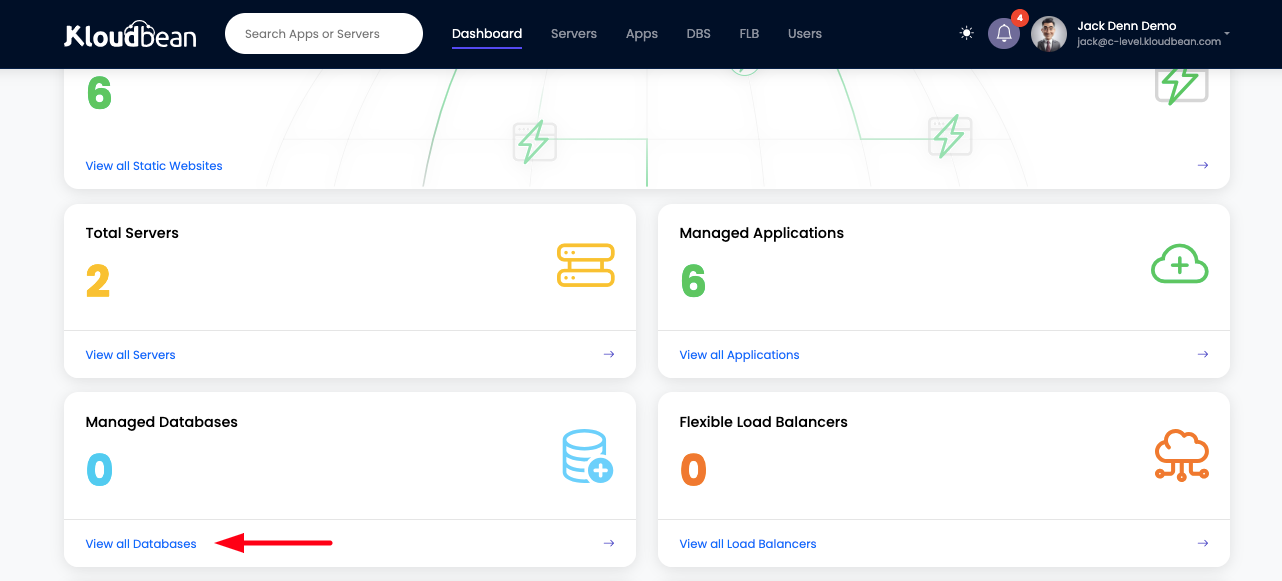
In database section, we currently do not have any database. In order to launch a new database, Click on Launch Database button.
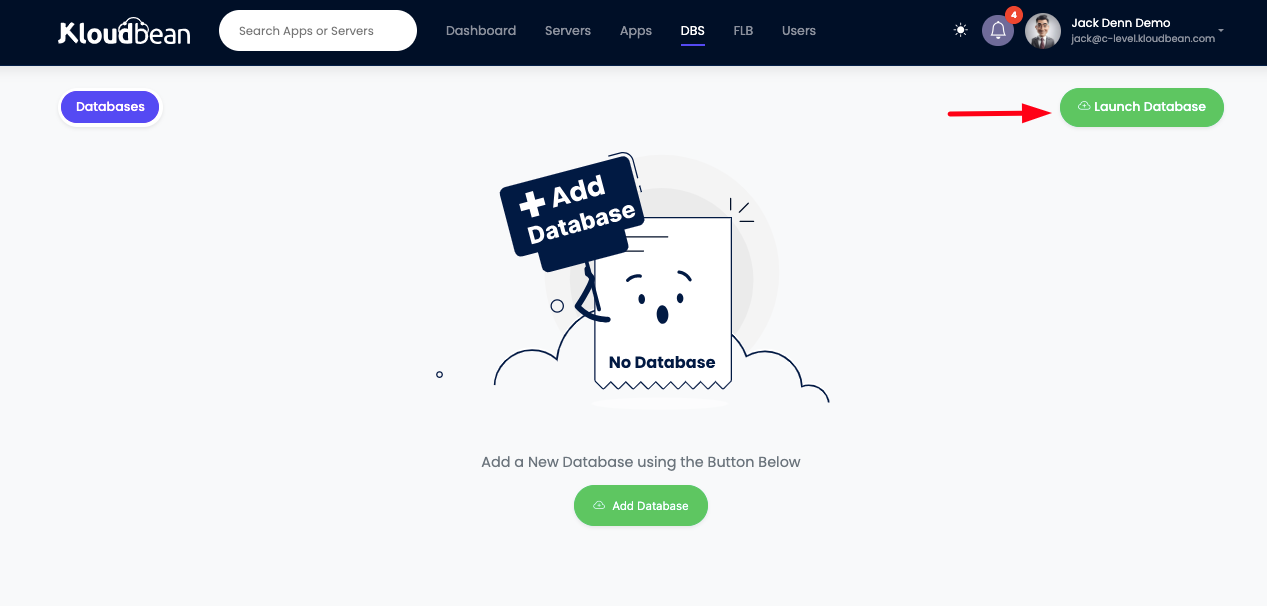
With this a new database launch panel should open and asking for the selection of required database along with other database basic configurations.
Step 2: Launching new PostgreSQL database
In our case we are going to launch PostgreSQL database in this tutorial, so let's go ahead and select MySQL from the database options.

Once database is selected, we will see all the database version including most recent one is available in the dropdown of field Database Version. If we have a requirement of any specific database version, we can select that particular version or we can select most latest one.
Along with database version, we have to add or select following important detail as well.
Database Name: This is going to be name of our database and the database that will be created as default in our PostgreSQL engine.
Database User: This is going to be the administrator user of the database, which is going to have maximum privileges.
Server Location: This is the physical location of the database server, try to select the location that is closest to the application server.
Server Size: Depending on the workload and application size, choose server size which better fits the requirement. For best performance, try to choose Dedicated servers, as their hardware are not shared and provide maximum performance.
After selecting all these fields, Click on LAUNCH DATABASE button to proceed to payment and then database will be launched.
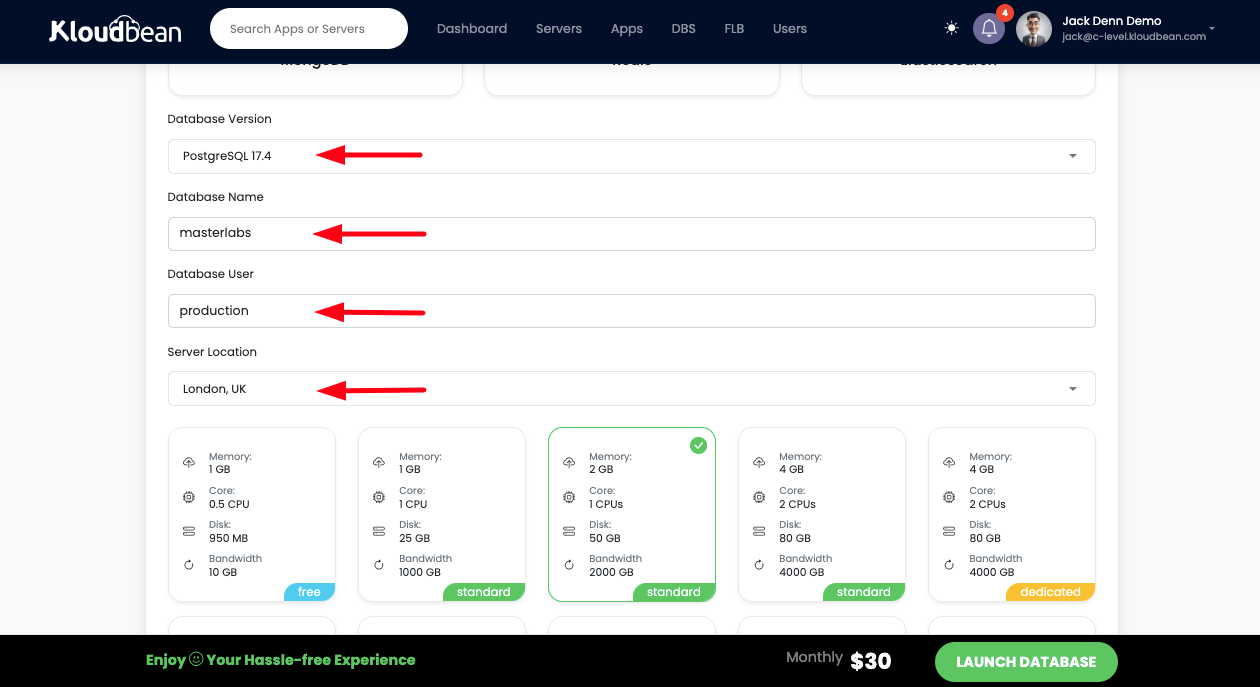
Launching new database takes approximately 4 to 5 minutes to fully create and ready to use. Once data creation is complete, we can access database detail by clicking on the database that is just created, in this tutorial we created Masterlabs database.

Once we click on database, it will take us to database detail section, where we will find following useful information, that is must required in order to access database or connect database with the application.
Host: This is database host name, a unique url for the database, to access it over the internet. Instead of host we can optionally use IP Address as well.
Database Name: This is the same name that we provide while creating this database, a default database is created with the same name.
Master User: This user has administrator privileges over the database.
Public Access: This field represent our current settings for the database, as of now our database is not accessible from anywhere, until to manage or update it's access from Firewall section. currently public access is completely disabled.
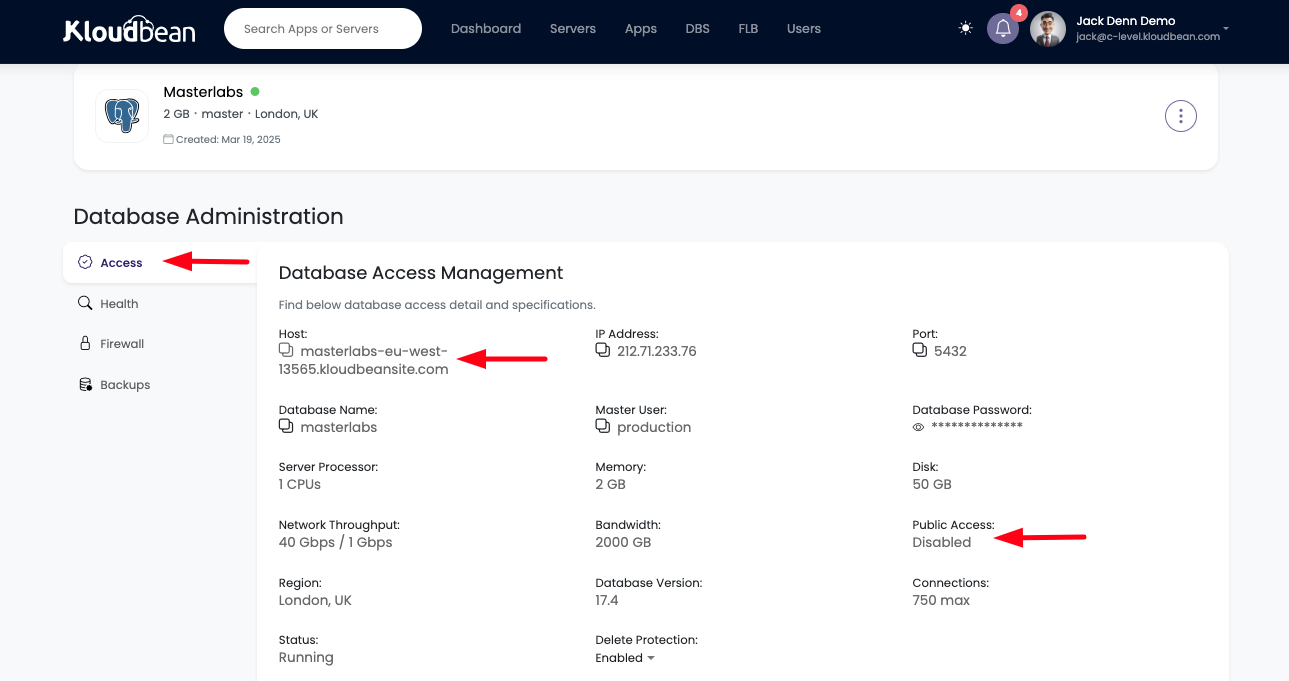
Step 3: Accessing database using pgAdmin
In order to access database, we are going to use pgAdmin tool, which is best to access and perform queries for Postgres database.
Login to your pgAdmin UI using credentials. Once login, now in order to connect database, click on new connection button in the left menu.
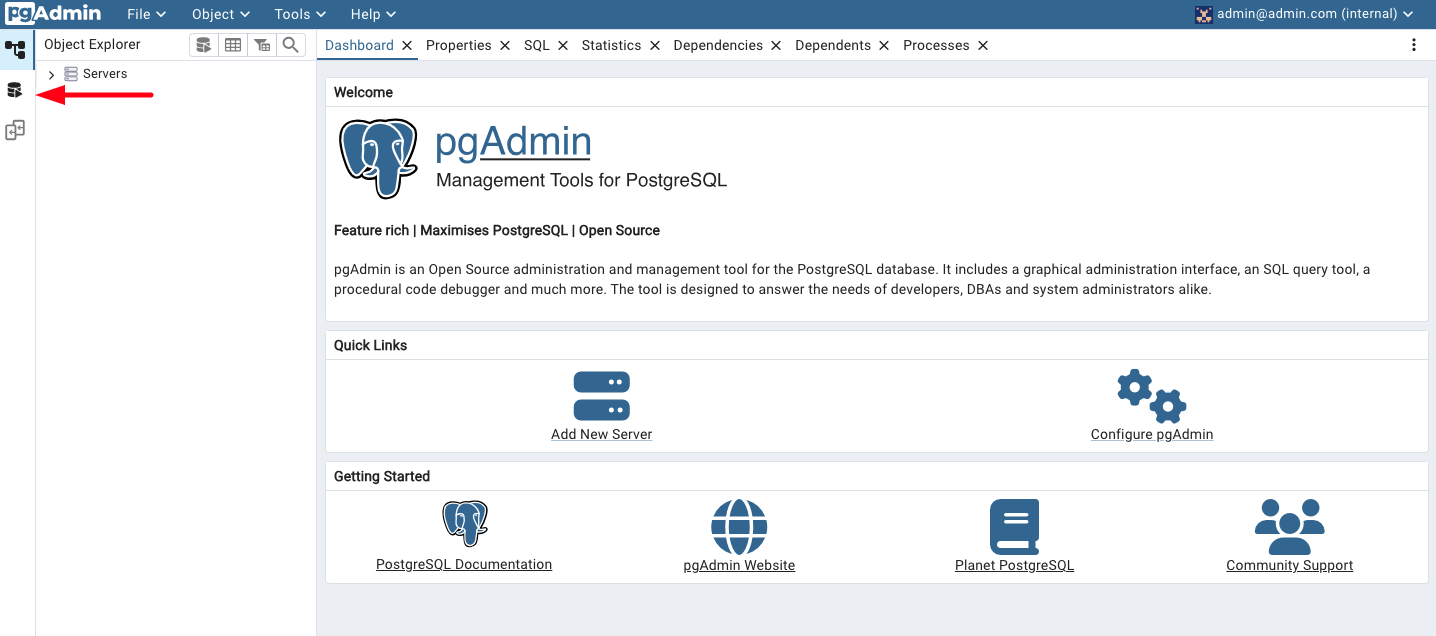
After this, a prompt will open and we need to add database host and access credentials.
Copy and paste these information from Kloudbean Access tab as shown above.
- Copy Host from Kloudbean Access tab and paste here in Host field.
- Copy Port (5432) from Kloudbean Access tab and paste here in Port field.
- Copy Database Name from Kloudbean Access and paste in Database field.
- Copy Master User from Kloudbean Access tab and paste in User field.
- Copy Password from Kloudbean Access tab and paste in Password field.
Click on Connect & Open Query Tool button to check if connection is working.

When we click on Connect & Open Query Tool, connection is going to get timeout, this is because currently database access is completely disabled and we are not able to connect.
Error: Connection timeout / expired
This connection failure is legitimate, as Kloudbean by default keep database access disabled in order to ensure database security. However we have option to allow access.

Further we will see how we can enable database public access or bind access to specific IP Addresses.
Step 4: Allowing database Public access (Optional)
If we want to access database from out local machine by using any tool, we have to enable public, however enabling public access is not recommended at all, but in some cases where for purpose we can enable public access and disable it immediately after making changes through public access from local machine.
To enable public access. Go to Firewall tab and select the following option;
"Allow database public access"
and hit Submit button.
This should turn on database public access.
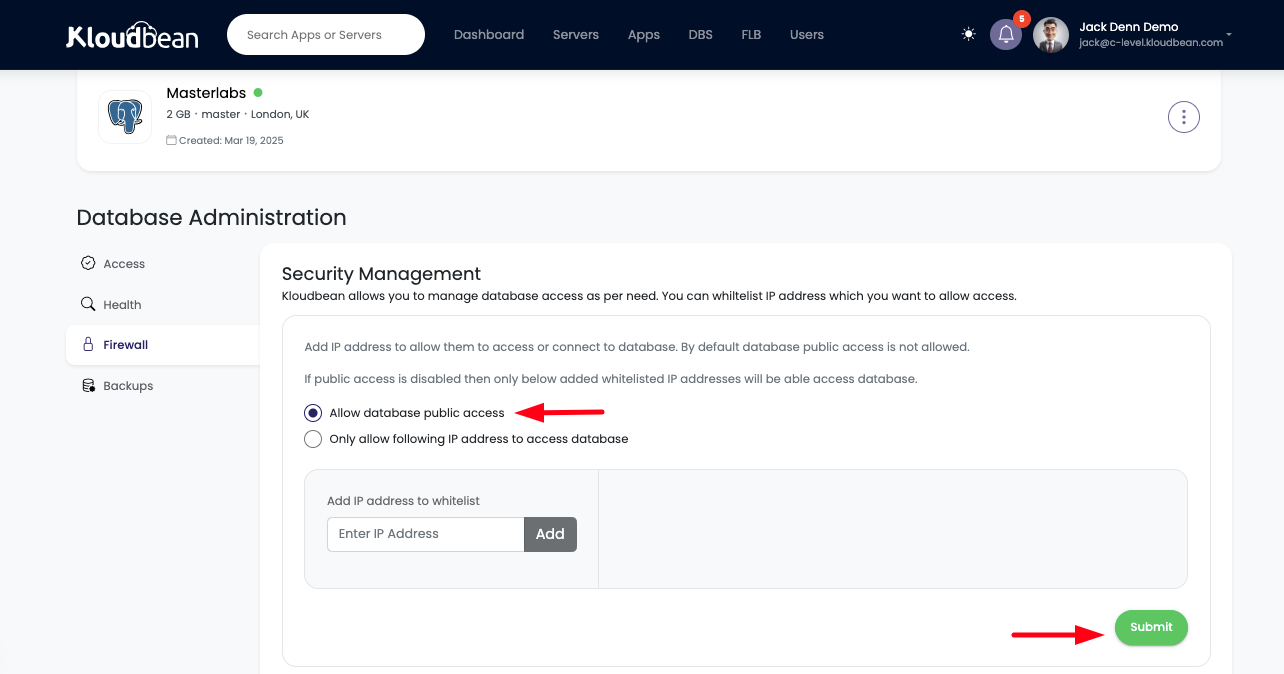
We can validate database public access from Access tab,
Go to Access tab and look at field Public Access.
Currently value is Enabled. It means database is now publicly accessible.
Enabling public access is not recommended. You should only enable access in some specific cases on temporary basis like development from local machine, access should be disabled right after work is done.
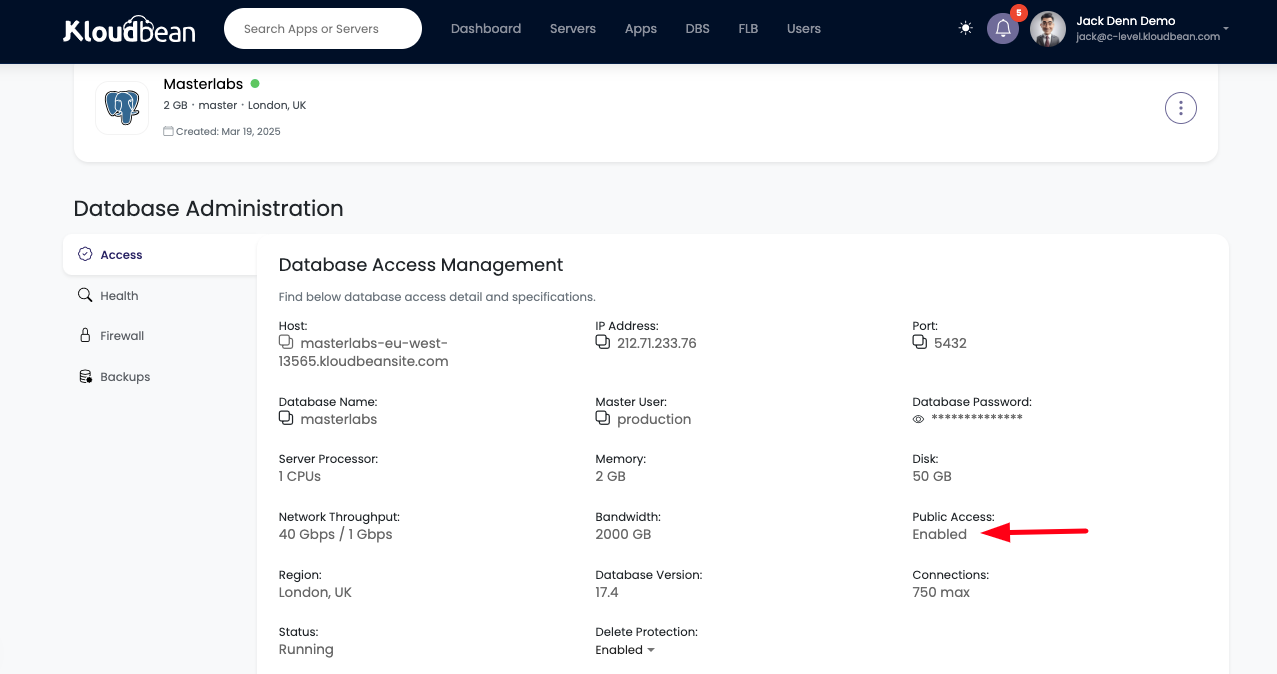
Now that public access is enabled. We can test our connection again.
This time we are able to connect to database successfully. Now we can execute required queries.
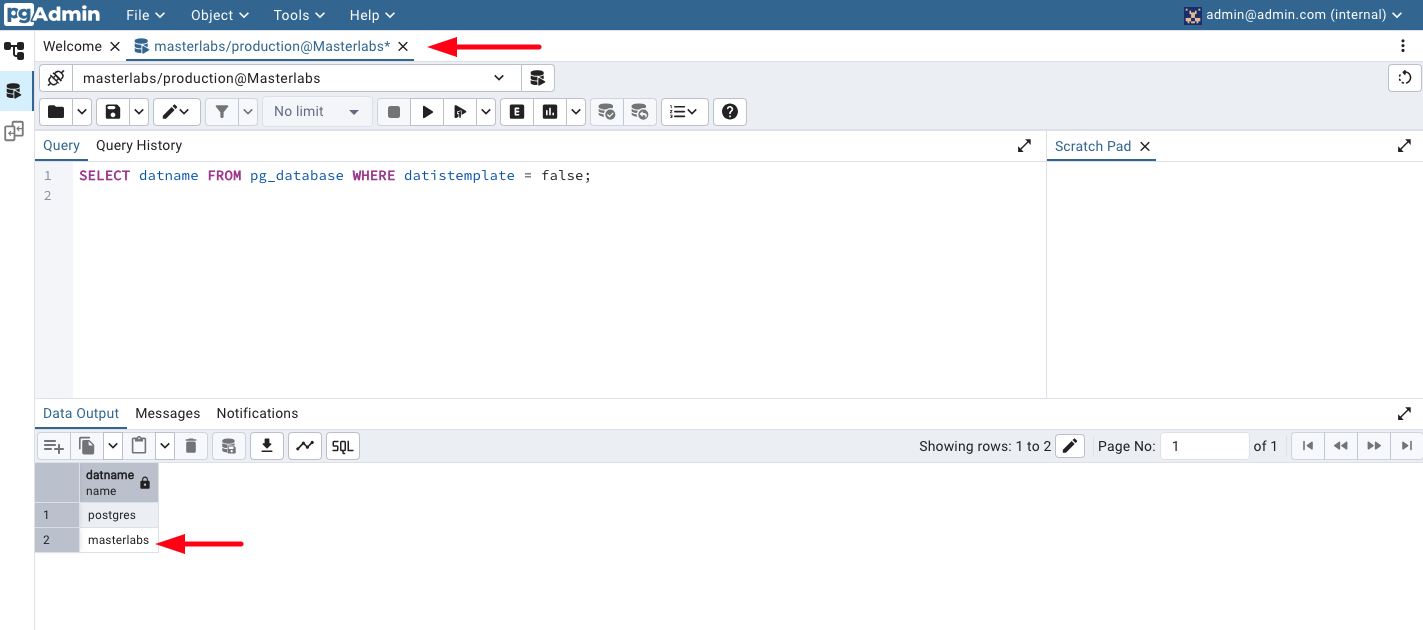
Step 5: Allowing IP based database access
Previously we saw how we can enable database public access, but this is not recommended as allowing public access can open database for incoming traffic and intruders can try to gain your database access.
Hence in this step we are going to see how to allow access only from particular IP addresses from where application is going to access it.
Go to Firewall section and this time choose option ;
"Only allow following IP address to access database".
Add the IP address from where you want to allow access, we can add multiple IP Addresses as per demand. Once added, click on Submit button to whitelist these IP addresses.

As the mentioned IP address has been whitelisted, now we should be good to access database from this particular server.
Accessing database through psql client.
As a demo purpose I'm going to use psql client from shell command to access database through terminal.
Once we enter following psql command with correct host user and database, It will ask for password.
psql -h masterlabs-eu-west-13565.kloudbeansite.com -p 5432 -U production -d masterlabs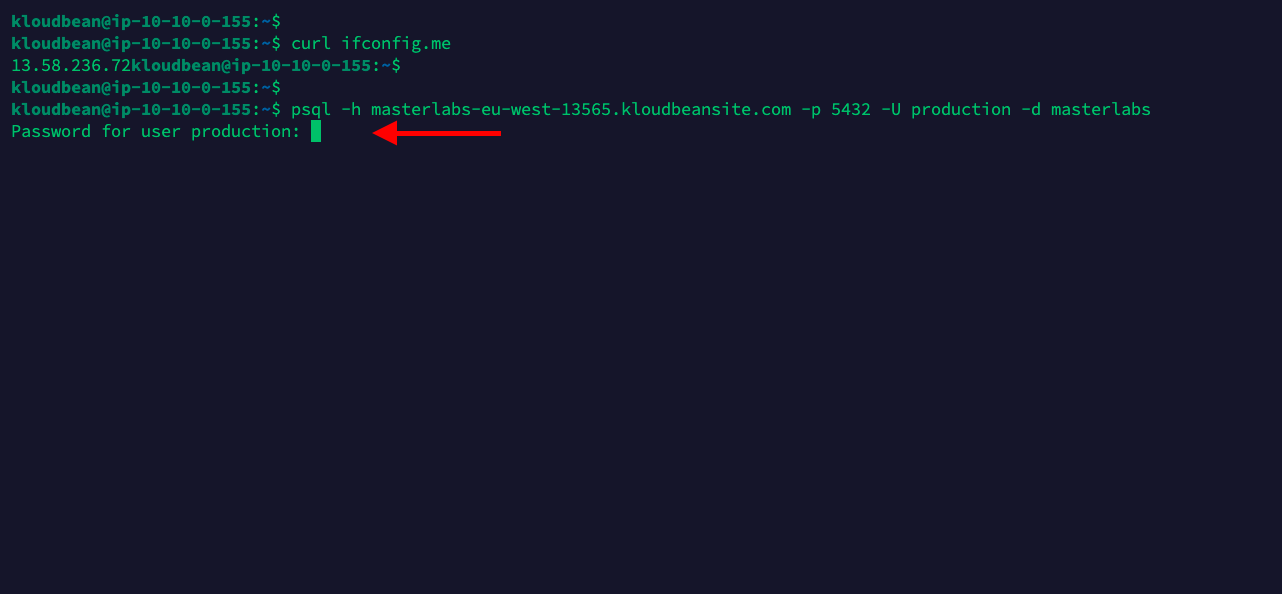
Paste password from Kloudbean Access tab and hit Enter. It should let us access the database.
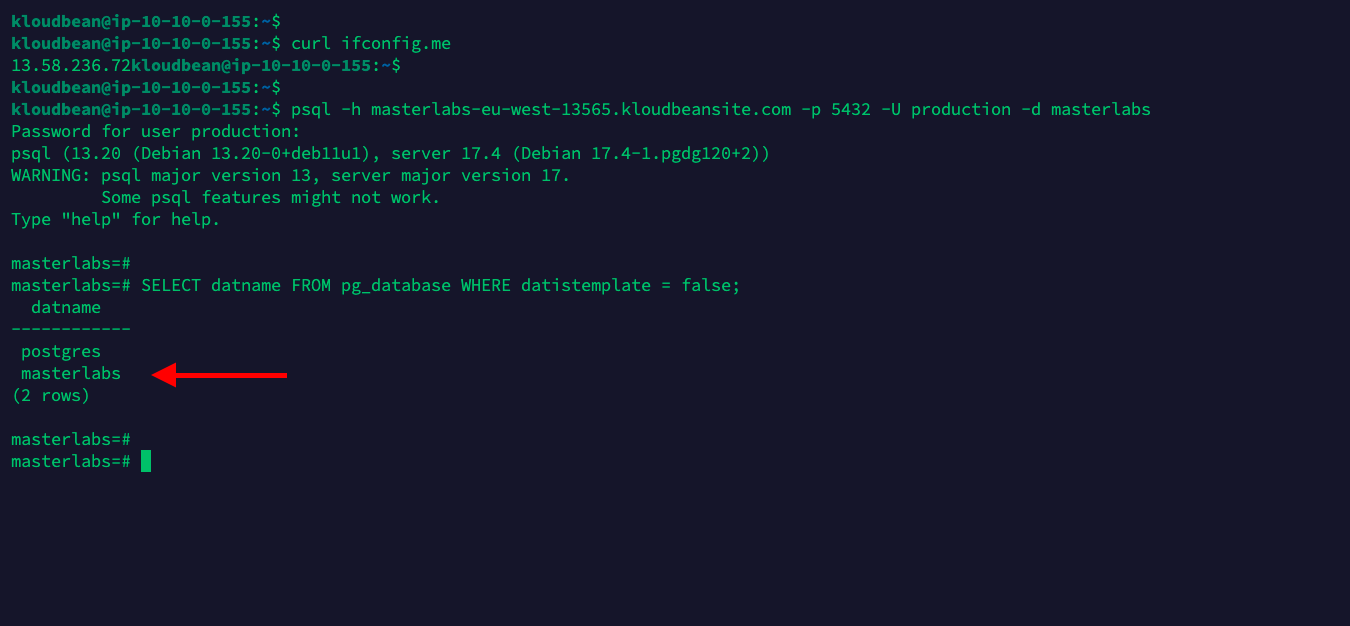
That's all for launching and accessing PostgreSQL database using Kloudbean Managed and highly optimized database.
Conclusion
Kloudbean makes launching and managing PostgreSQL databases fast, easy, and secure, removing the complexities of database administration. With just a few clicks, your PostgreSQL database is up and running, delivering optimized performance, scalability, and reliability for your applications. Start launching your managed PostgreSQL database on Kloudbean today and experience hassle-free database management.
If you run into any issues while setting up or managing your PostgreSQL database on Kloudbean, our expert support team is available 24/7 to provide assistance.